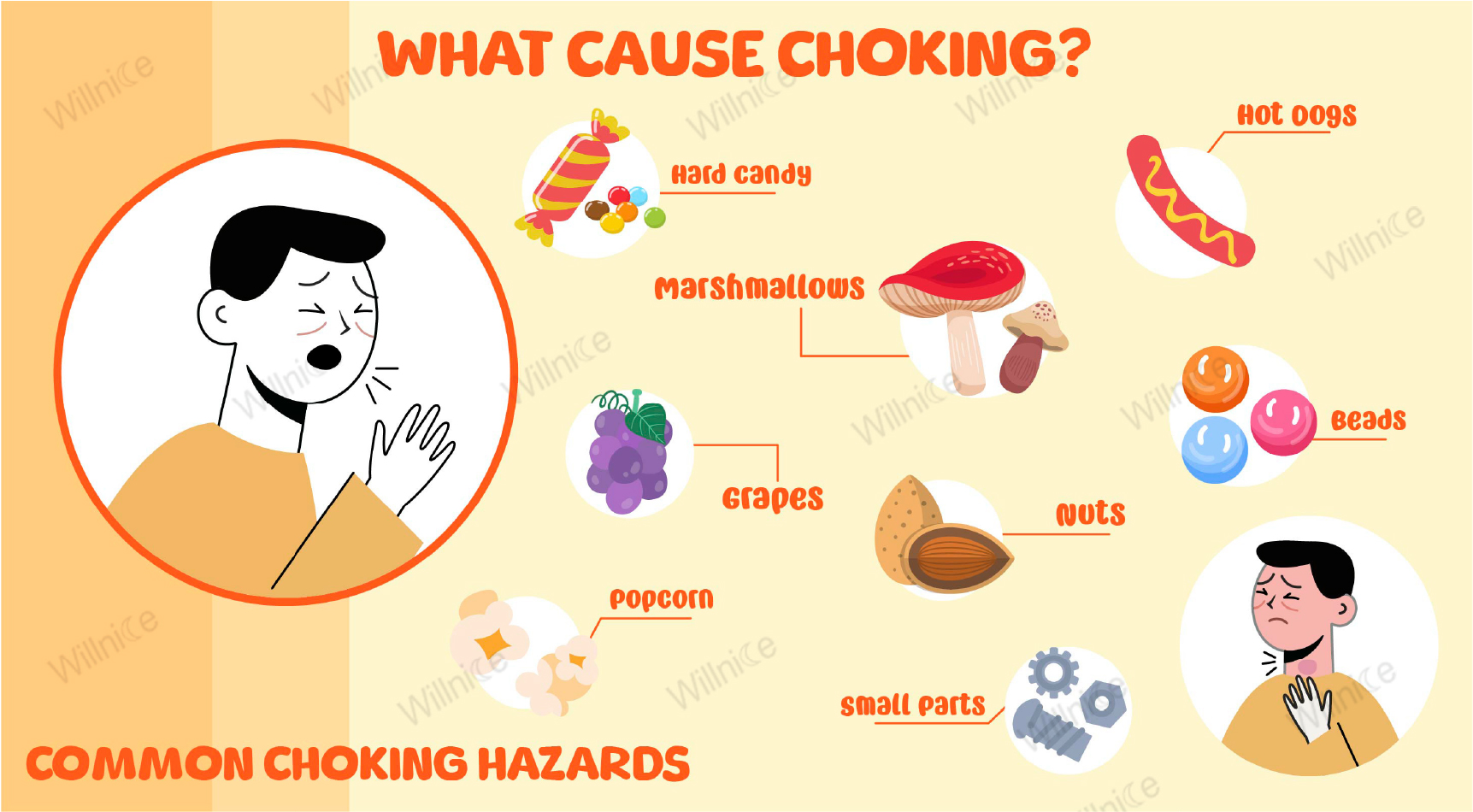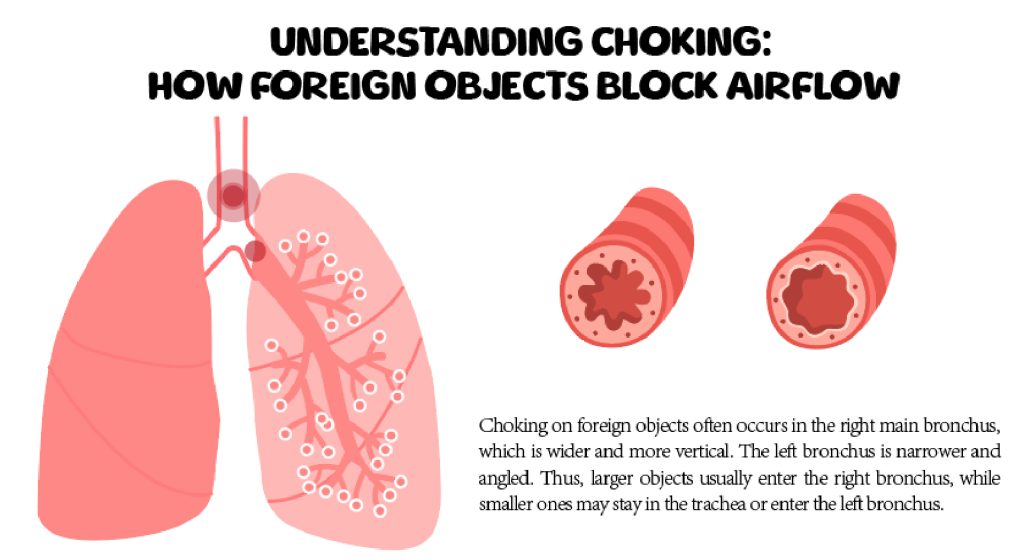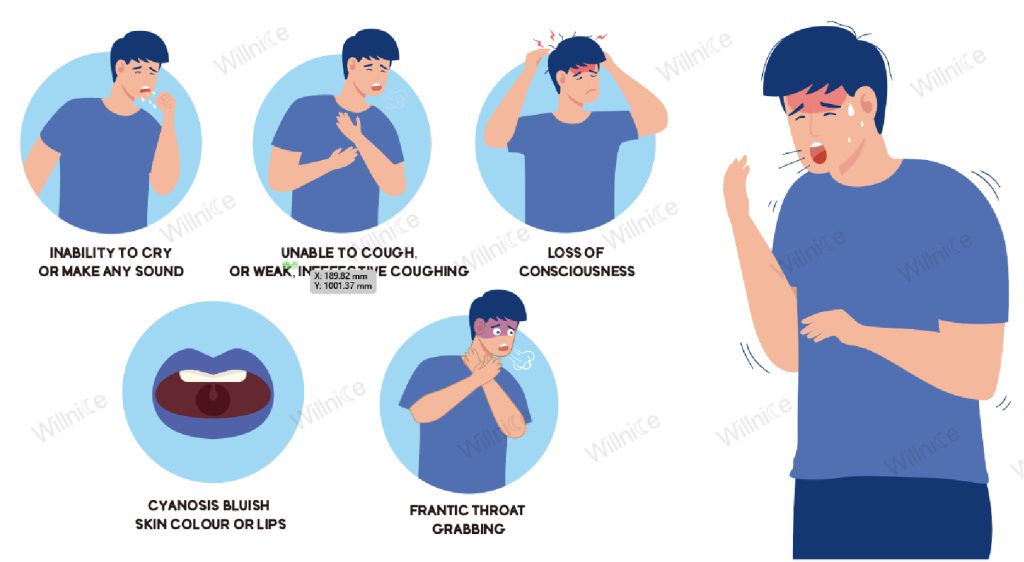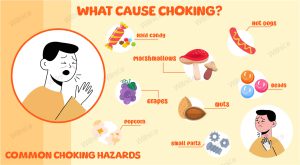This article will provide an in-depth exploration of the causes of choking across different age groups, including infants, children, adults, and the elderly. We will also detail the types and signs of choking to enhance your understanding and help you better prevent this life-threatening incident.

Understanding Choking:
How Foreign Objects Block Airflow
Choking occurs when foreign objects or secretions block the airways, preventing air from entering the lungs for ventilation, thereby affecting normal breathing. In severe cases, choking can lead to death within minutes.
When people swallow, the epiglottis covers the trachea to prevent food from entering the airway, while a sphincter at the opening of the esophagus helps control the entry of food and liquids into the esophagus, preventing reflux.
- Physiological Development Features: Narrow airways, underdeveloped chewing and swallow ingabilities.
- Inappropriate Food: Feeding infants foods unsuitable for their age, such as hard round,smooth, or sticky foods like candy, which can easily get stuck in the airway.
Choking can occur when people talk or laugh while eating, causing the epiglottis to open and food to slip into the trachea. Incoordination or underdevelopment of swallowing functions (as in infants and young children) can also lead to food or foreign objects slipping into the airway.

Common Causes of Choking in Infants and Babies
Step 1: Physiological Development Features: Narrow airways, underdeveloped chewing and swal lowing abilities.
Step 2: Inappropriate Food: Feeding infants foods unsuitable for their age, such as hard, round, smooth, or sticky foods like candy, which can easily get stuck in the airway.
Step 3: Poor Feeding Habits: For infants and babies, improper feeding positions, feeding too quick ly, or allowing infants to eat while playing.
Note: Infants should be held in an upright position to avoid lying flat or on their side.
Step 4: Poor Home Care: Inadequate parental supervision at home.
Common Choking Hazards in Infants and Babies
Steps
- Non-Food Items: Small toys or toy parts.
- Food Items: Milk, soft candies, jellies, sticky foods, etc.
Common Causes of Choking in Children
- Age Characteristics: Children like to explore their surroundings, are active, and often distracted. They may put small items like toy parts, coins, or food fragments into their mouths while play ing, which can accidentally be inhaled into the airway.
- Physiological Development Features: Narrow airways, immature teeth, underdeveloped chewing and swallowing abilities, high levels of activity, and lack of concentration.
- Inappropriate Food: Foods such as hard, round, smooth, or sticky foods like nuts, grapes, and can. dies, can easily get lodged in the airway.

Conclusion
Choking is a life-threatening emergency and a significant cause of death, especially among children and the elderly.
When choking occurs, it is crucial to take prompt first aid actions, such as the Heimlich maneuver or using a professional choking rescue device.



 Login with Google
Login with Google Login with Facebook
Login with Facebook